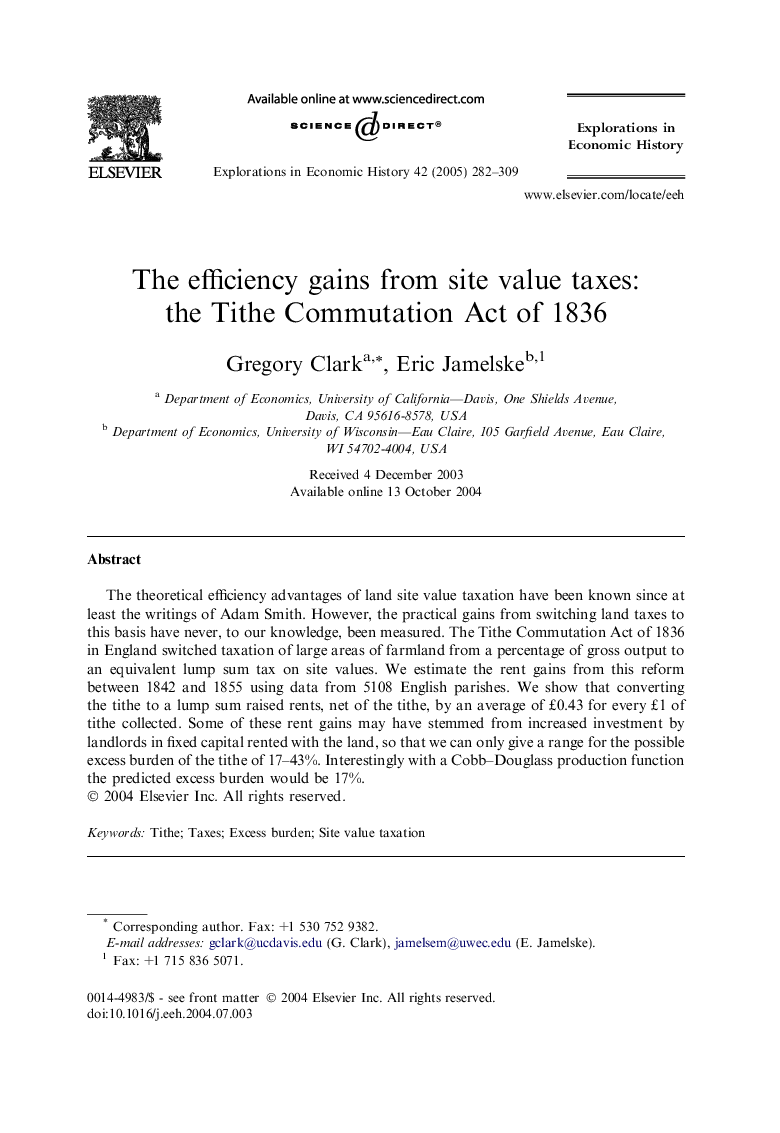| Article ID | Journal | Published Year | Pages | File Type |
|---|---|---|---|---|
| 9551367 | Explorations in Economic History | 2005 | 28 Pages |
Abstract
The theoretical efficiency advantages of land site value taxation have been known since at least the writings of Adam Smith. However, the practical gains from switching land taxes to this basis have never, to our knowledge, been measured. The Tithe Commutation Act of 1836 in England switched taxation of large areas of farmland from a percentage of gross output to an equivalent lump sum tax on site values. We estimate the rent gains from this reform between 1842 and 1855 using data from 5108 English parishes. We show that converting the tithe to a lump sum raised rents, net of the tithe, by an average of £0.43 for every £1 of tithe collected. Some of these rent gains may have stemmed from increased investment by landlords in fixed capital rented with the land, so that we can only give a range for the possible excess burden of the tithe of 17-43%. Interestingly with a Cobb-Douglass production function the predicted excess burden would be 17%.
Keywords
Related Topics
Social Sciences and Humanities
Arts and Humanities
History
Authors
Gregory Clark, Eric Jamelske,
